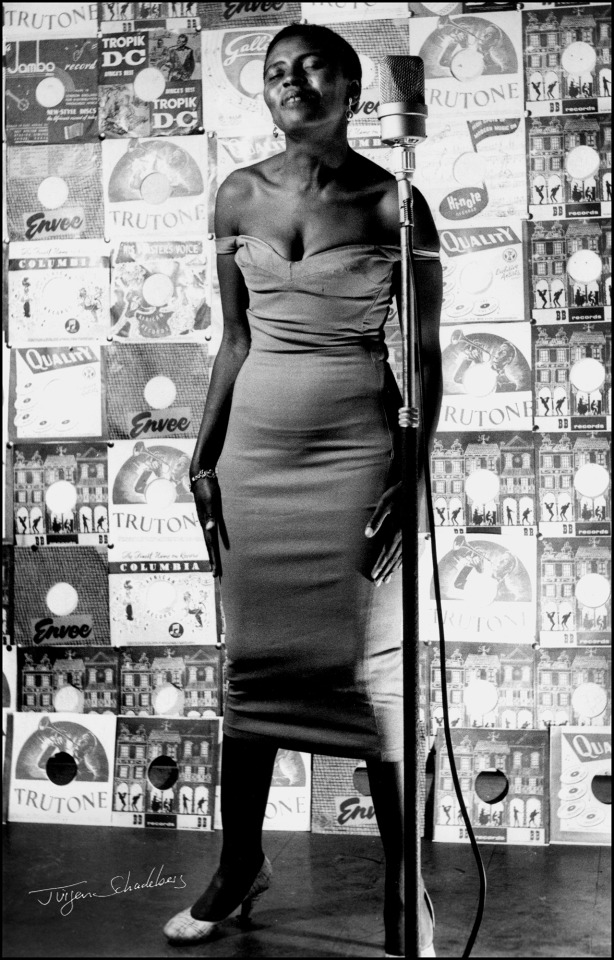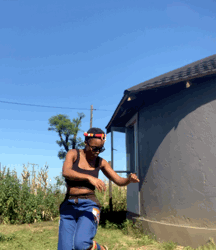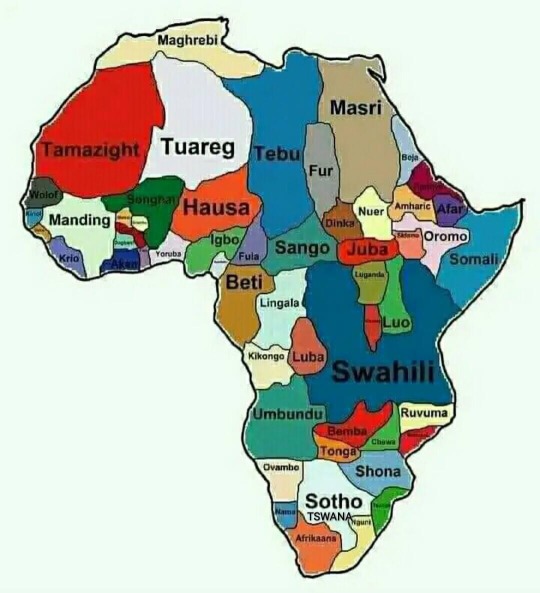#sotho
Text

Sotho bride and groom, Bontle Modiselle and Priddy Ugly, Lesotho
#sotho#lesotho#africa#southern africa#folk clothing#traditional clothing#traditional fashion#cultural clothing#basotho
422 notes
·
View notes
Photo

Miriam Makeba’s portrait greets and grounds you near the entry of Africa Fashion.
Makeba’s emergence as a singer on the global stage coincided with the emergence of an independent African continent. Her songs blended popular musical styles like Jazz with indigenous South African melodies, often incorporating Swahili, Xhosa, and Sotho lyrics. Well-known globally for her songs Pata Pata and Qongqothwane (the Click Song) Makeba’s music and self-fashioning embodied African liberation and identity.
For many Africans, her music gave voice to the dawn of a new independent era and the liberation struggles that remained. Affectionately referred to as Mama Africa by her legions of fans, Makeba came to embody a forward-looking Pan-Africanism and Black Power.
See this portrait of Makeba and hear her singular voice as part of the African Cultural Renaissance that welcomes you in #AfricaFashionBkM.
📷 Jürgen Schadeberg (German, 1931–2020). Miriam Makeba, 1955. © Estate of Jürgen Schadeberg (Photo: Courtesy of the Estate of Jürgen Schadeberg)
#Brooklyn Museum#AfricaFashionBkM#AfricaFashion#Africa#bkmartsofafrica#fashion#miriam makeba#music#Jurgen Schadeberg#photography#portrait#african diaspora#pan-africanism#swahili#xhosa#sotho
435 notes
·
View notes
Text
Amapiano, a Nguni word loosely translated to "the pianos", is a South African subgenre of house music that emerged in South Africa in the mid-2010s. It is a hybrid of deep house, jazz, and lounge music characterized by synths and wide percussive basslines.
There is ambiguity and debate concerning its origins, with various accounts of the musical styles in the Johannesburg townships. Because it has a small similarities with Bacardi, some people assert the genre began in Pretoria but it remains uncertain. Various accounts as to who formed the popular genre make it impossible to accurately pinpoint its origins.
The word amapiano is a IsiZulu or IsiXhosa, or dipiano is a word loosely translated to "the pianos", The genre is mostly sang in Zulu and Xhosa, Sotho, Setswana, Xitsonga, one of South Africa's native tongues.
Amapiano is a subgenre of house and kwaito music. It is a hybrid of deep house, jazz, and lounge music characterised by synths and wide percussive basslines.
Amapiano is distinguished by high-pitched piano melodies, kwaito from South Africa basslines, low tempo 1990s South African house rhythms and percussions from another local subgenre of house known as tribal house.
An important element of the genre is the prevalent use of the "log drum", a wide percussive bassline, which was popularised by producer MDU aka TRP. According to amapiano pioneer Kabza De Small:

I don't know what happened. I don't know how he figured out the log drum. Amapiano music has always been there, but he's the one who came up with the log drum sound. These boys like experimenting. They always check out new plug-ins. So when MDU figured it out, he ran with it.
The use of percussive basslines in South African house music predates amapiano, and was possibly pioneered by kwaito producer M’Du (also known as Mdu Masilela.)
#amapiano#african#afrakan#kemetic dreams#africans#brownskin#brown skin#afrakans#african culture#african music#epic video#Nguni#house music#deep house#jazz#lounge#isizulu#Sotho#kwaito#synths
96 notes
·
View notes
Text
CENTRAL & SOUTH AFRICAN RESOURCES
The Anthropological Masterlist is HERE.
Central Africa is an African region that spans the central part of the continent.
AMBUNDU ─ “The Ambundu, or Mbundu, people are an African people. They are native to northwest Angola.”
─ Mbundu Information
─ Angolan Culture
─ Kimbundu Language (in Portuguese)
ANGOLA ─ “The Angolan people are an African people that share the Angolan culture. They are native to Angola.”
─ Angolan Information
─ Angolan History
─ Angolan Rulers
BAMBUTI ─ “The Bambuti, or Mbuti, people are an African people. They are native to Congo.”
─ Mbuti Culture
BUSHONGO ─ “Bushongo, or the Kingdom of Kuba, was an African civilization that lived from 1625 C.E. to 1884 C.E. They lived in Central Africa.”
─ Kuba Art
─ Bushongo Creation Myth
─ Bumba in Bushongo Myth
CAMEROON ─ “The Cameroonian people are an African people. They share the Cameroonian culture.”
─ Cameroonian Information
─ Cameroonian Culture
─ Cameroonian History
EFIK ─ “The Efik people are an African people. They are native to southern Nigeria and western Cameroon.”
─ Efik Language
NGOMBE ─ “The Ngombe are a Bantu linguistic group. They are native to the Democratic Republic of Congo.”
─ Akongo in Ngombe Mythology
Southern Africa is an African region that spans the southern part of the continent.
HIMBA ─ “The Himba people are an African people. They are native to northern Namibia.”
─ Himba Information
KHOEKHOE ─ “The Khoekhoe, or Khoikhoi, people are an African people. They are nomadic and native to southwestern Africa.”
─ Early Khoekhoe Society
─ Khoekhoe Religion
─ Khoekhoe Language
KHOISAN ─ “The Khoisan people are an African people. The term refers to anyone in South Africa that does not speak a Bantu language.”
─ San Culture
─ Khoisan Culture
─ Khoisan Dictionary
PEDI ─ “The Pedi, or Bapedi, people are an African people. They are native to northeastern South Africa.”
─ Pedi Culture
─ Pedi History
─ Pedi History
SOTHO ─ “The Sotho, or Basotho, people are an African people. They are native to southern Africa.”
─ Basotho Clothing
─ Sesotho Language
XHOSA ─ “The Xhosa people are an African people. They are native to the Eastern Cape Province in South Africa.”
─ Xhosa Information
─ Xhosa Folklore
─ Xhosa Language
#resources#central africa#south africa#ambundu#angola#bambuti#bushongo#cameroon#efik#ngombe#himba#khoekhoe#khoisan#pedi#sotho#xhosa
53 notes
·
View notes
Text
Complete Sotho to English Online Translation Services: OPI Sotho-English Translator
Unraveling the Rich Tapestry: Exploring the Sotho Language and Culture
The Sotho people, a vibrant and resilient ethnic group predominantly found in South Africa and Lesotho, have woven an intricate cultural tapestry that has withstood the test of time. At the heart of their identity lies the Sotho language, a melodic and expressive tongue that not only facilitates communication but also serves…

View On WordPress
#African traditions#Bantu languages#cultural preservation#LanguageXS#Lesotho#Sesotho#Sotho#Sotho culture#Sotho to English translation#South Africa
1 note
·
View note
Text
BEST SHEBEEN TREFFER EVA!!! (Everyone was wondering when the updated version was coming out. Still love the original but this one's a banger!)
youtube
1 note
·
View note
Text
Malebela le maqheka a ho sebelisa ChatGPT hamolemo
(Sotho)
Ho fumana likarabo tsa boleng bo holimo ho ChatGPT, ho na le malebela a 'maloa ao u ka a latelang. Sebelisa malebela ana ho natefeloa ke boiphihlelo bo botle ba ChatGPT:
1.Sebelisa "###" ho arola maemo a mangata litaelong tsa hau:
Ka ho botsa lipotso tse kang mohlala o ka tlase, ChatGPT e ka sebetsana le potso ea hau ka nepo le ho fana ka likarabo tse sebetsang le tse nepahetseng.
Maemo
Lipolelo tse 10, e 'ngoe le e 'ngoe e ka tlase ho litlhaku tse 150
Ho bonolo hore baithuti ba sekolo se phahameng ba utloisise
Potso
Mekhoa ea ho ithuta lipuo tse ling ka ChatGPT
2.Botsa lipotso ka Senyesemane:
Ho botsa lipotso ka Senyesemane ho nepahetse ka mabaka ana:
Lintlha tsa Koetliso: ChatGPT e rutoa haholo ka mongolo oa Senyesemane, kahoo ho botsa ka Senyesemane ho nolofalletsa mohlala ho utloisisa le ho fana ka likarabo tse nepahetseng haholoanyane.
Tsebo e Ngata: Mohlala o na le phihlello ea tlhaiso-leseling e ngata bakeng sa lipotso tsa Senyesemane, tse ka hlahisang likarabo tse nepahetseng le tse qaqileng haholoanyane.
Ho Fokotseha ho Hlakola: Ho botsa ka Senyesemane ho fokotsa ho hlaka le ho se utloisisane ho amanang le puo, ho eketsa monyetla oa hore mohlala o utloisise potso ea hau ka nepo.
Hlalosa hore u batla feela tlhahisoleseding e nepahetseng:
Ha u botsa potso, laela ChatGPT ho fana ka lintlha tse nepahetseng feela. Ntle le taelo ena, ChatGPT e ka hlahisa likarabo tse iqapetsoeng.
U fumane malebela aa joang?
Leka ho li sebelisa ho natefeloa ke ChatGPT e bonolo.
sotho #chatgpt #ai #katleho #ea
0 notes
Text
Big facial load on the tongue for a big tit young asian slut Kya Tropic who loves fucking
Candid friends shopping with big ass in white shorts (no sound)
Redhead Cameron Love gets her pussy plowed with a red dildo by girlfriend Lavish Styles
La agarro con camara escondida
Fucking my inflatable pussy ball
Plaza Roman Davao Philippines
punjabi bhabi love riding on friend dick
LETSDOEIT - Apolonia Lapiedra and Her BFF's Have an Orgasm Contest
Adriana Chechik drinks a bowl FULL of sperm and squirt in hardcore gangbang
Solo brunette anal fucks dildo drill
#surrenders#encounterable#fire-brand#betweens#redbug#neurocelian#Duvida#Faludi#roundridge#Olwen#wild-made#reforce#Sotho#pronunciational#unfusibleness#hypochlorous#inclinometer#phalli#Luing#operatable
0 notes
Photo


The Khodumodumo [Sotho mythology]
The Sotho people are an ethnic group that lives mainly in Lesotho, and South-Africa, the nation that surrounds that country. These people have a story about a horrible, gigantic monster that wreaked destruction upon the land. It was called Khodumodumo, and it was a terrible being with many tongues that ended in sharp points, which the monster used to impale its victims. If it didn’t have to fight, however, Khodumodumo preferred to swallow its prey whole. As such, the beast had swallowed many animals and humans. Entire villages disappeared into its gaping maw when the monster came across them.
As the story goes, a pregnant woman had learned that the beast hunted by smell rather than sight, so when the monster found her village she successfully hid from Khodumodumo by hiding on a pile of manure. The beast did not notice her during its rampage, and when everyone in the village had been swallowed alive, it retreated to a nearby mountain to rest.
Soon after, the woman gave birth to a boy. Fearing that the monster might return, she left the infant alone and went out in search of more manure for the pile. But when the woman returned, she found that her child was gone and a man was sitting in its place, dressed in animal hides. When she asked him where her son was, he replied that he was the baby she had left earlier that day. His name was Senkatona, and he had matured in a very short time (small note: I am uncertain why the child grew up in a single day but assume the story was not meant to be taken literally, or perhaps we should assume that the gods blessed Senkatona because the people were in need of a hero). He then asked his mother what happened to the other villagers, for the entire town was empty, and she replied that they were all swallowed by the terrible Khodumodumo. ‘Tell me where this monster is’, said Senkatona. The woman showed her son how he could get to the mountain where the beast was resting, and so Senkatona grabbed his spear and began his ascent.
(as a small sidenote: the weapon used by the hero in this story is an assegai, a short spear with a cutting edge. Senkatana wielded two of them.)
Eventually, the hero stood in front of the gigantic Khodumodumo. The beast tried to impale him with his tongues, but Senkatona cut them all off. Cunning as he was, Senkatona ran around the monster, for he knew the beast was heavy and bloated from his recent meal. As he had predicted, Khodumodumo was unable to turn around quickly enough to react, and Senkatona cut the beast open with his spears. Since all of the townspeople were only recently eaten and they were all swallowed whole, they were still alive and hadn’t been digested yet. Upon being freed, the townspeople were all thankful and Senkatona went on to become chief of the village.
However, one of the villagers was ungrateful. When Senkatona cut open the stomach of Khodumodumo, he had accidentally injured one man with the tip of his spear. This man bore a grudge towards the hero and swore vengeance upon him. So one day, the man rallied his family and they tried to kill Senkatona.
As Senkatona was a great warrior, fighting him would normally be a difficult task. But he had grown tired of mankind’s ingratitude and did not fight back. And so, the hero was slain by his assailants.
Interestingly, many Bantu cultures have some variation of this story about a ‘swallowing monster’, such as the Xhosa and the Zulu. I do not know which one came first, but these stories are thought to be very old. As a closing note: the name ‘Khodumodumo’ is an onomatopoeic word for loud noises, and can be roughly translated to ‘great noise’. I also wonder whether the story was meant to convey a moral? Perhaps it was a cautionary tale about ingratitude. That’s just speculation on my part, though.
Sources:
Douglas, T. and Temilola, A., 2019, African Religions: Beliefs and Practices through History, ABC-CLIO, 438 pp.
Dseagu, S. A., 2021, The Swallowing Monster in Southern African folklore: Need for Morphological Investigation, Academia Letters, Article 1963.
(image source 1: Feig Felipe Pérez on Artstation; illustration for the Mitos y Leyendas trading card game)
(image source 2: WillOBrien on Deviantart; illustration for ‘Tome of Beasts 2’)
67 notes
·
View notes
Text
Maybe I’m overanalyzing this but I realized that Copia in all his music videos, he has this overwhelming or rather a graceful presence. The way he delivers himself when he’s on a music video
The way he walked gracefully and elegantly in Hunter’s Moon
The way he sways his hips and arms in Spillways
And the way he slides and dances in Rats
Copia, despite all of his goofy and silly personality in general, he has a graceful side shown in the MVs as oppose to him in rituals (which him being goofy and being a whore)
So in conclusion, Copia doesn’t have his awkward cringey self, his sexual charisma as Papa but also he has elegance and grace too but only shown in MVs
#taking in the account it is more articulated in MVs in real but in fiction wise- that is also something to note about#this came to me while i was getting to sleep sothos was purely me rambling#the band ghost#papa emeritus iv#cardinal copia#papa my beloved#anyway that’s my last brain cell functioning so i’m goingto the void
84 notes
·
View notes
Text

Sotho man, Lesotho, by Steve Evans
#sotho#lesotho#africa#southern africa#traditional clothing#traditional fashion#cultural clothing#folk clothing
88 notes
·
View notes
Text

African Còuntries That Spèaks Their Languages More Than Fòreign Languages:
1. Ethiopia 🇪🇹 (Amharic)
2. Tanzania 🇹🇿 (Swahili)
3. Somalia 🇸🇴 (Somali)
4. Kenya 🇰🇪 (Swahili)
5. Eritrea🇪🇷 (Tigrenia)
6. Zambia 🇿🇲 (Bemba, Nyanja)
7. Madagascar🇲🇬 (Malagasy)
8. Malawi 🇲🇼 (Chewa)
9. Botswana 🇧🇼 (Setswana)
10. Lesotho 🇱🇸 (Sesotho)
11. South Africa 🇿🇦 (Nguni, Sotho-Tswana)
73 notes
·
View notes
Text
Please reblog for a bigger sample size!
If you have any fun fact about Lesotho, please tell us and I'll reblog it!
Be respectful in your comments. You can criticize a government without offending its people.
54 notes
·
View notes
Photo

Names for Germany in the world's languages.
by u/nehala
EDIT: ERRORS: Nauru, the northern Sotho speaking region of South Africa, and Israel should be orange on the map.
For the curious and/or visually offended, the ugly borders, especially for the former USSR and Yugoslavia, are due to the blank map being over 25 years outdated. I didn't realize it until I was too deep in (this was a three hour project to avoid studying) and later hastily handdrew them in. I also had to manually add and approximate the Pacific Islands--I know plenty are missing and that their locations are wonky.
I tried my best to keep to most commonly spoken languages. I kept regional distinctions whenever I could. In much of Africa, I resorted to official languages if no single non-European language was dominant--in many cases it didn't matter since it used the same basic etymology for "Germany" as the colonizing language.
In many countries, especially certain Pacific Island nations, their official languages didn't have sufficiently detailed dictionaries, wikipedia pages, etc. available online for me to look up the term. I provisionally used the colonial language, on the presumption the local languages used a similar name for Germany. I know this isn't bulletproof since many of those islands changed colonial hands multiple times.
142 notes
·
View notes
Text
Sotho; or is it Tswana? I can never tell... THE, I MEAN, THE BEST 🥇BASOTHO SONG EVA
youtube
0 notes
